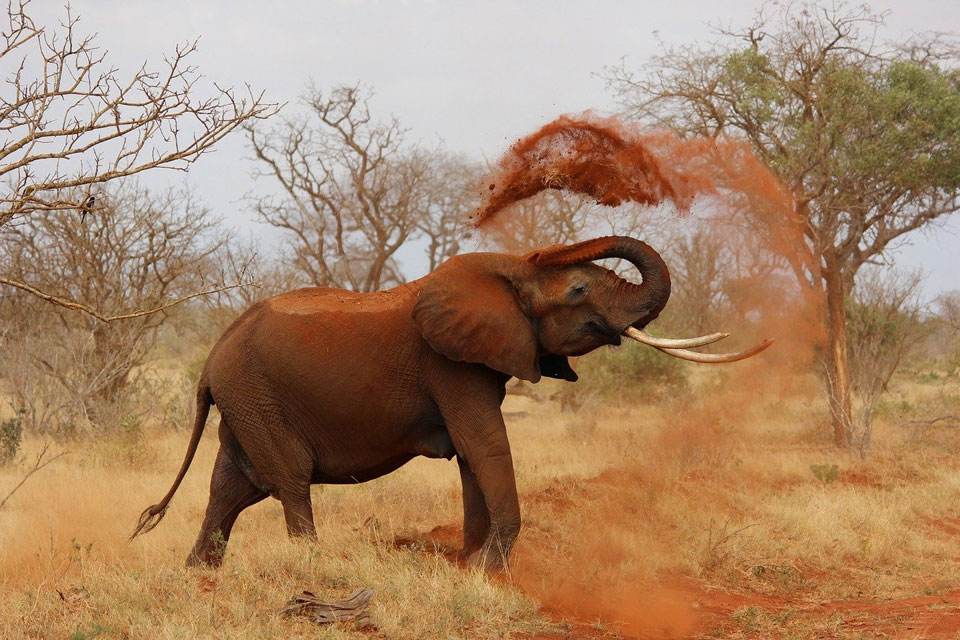Non-confrontational lessons and insights from Kaavan the rescue elephant
Kaavan’s mental journey is a marvellous and non-intimidating parallel that we can use to teach young people about resilience, believing that growth is possible, achieving their potential – and making friends while having fun along the way!
An Engaging Tale of Resilience
Sometimes it can be hard to motivate high potential learners when they are stuck in the frame of mind that everything is “pointless” and they want to give up. Drawing inspiration from the successes of their peers or our own adult experiences of having overcome hurdles can sometimes demotivate them further.
So, who better than the lovely rescue elephant, Kaavan, to motivate them through looking at similar challenges in their own lives? This resilient elephant can teach young and old alike about keeping going when things seem bleak.
In 1985, at only one year old, Kaavan was taken from his family to live in a zoo in a different country. He was alone in an enclosure that was very small and lacked tree cover, a water source or toys. He became very depressed – particularly after the elephant who had joined him in 1990, Saheli, died in 2012, leaving him alone again for another 8 years. Other than as a baby, those years with Salehi had been his only opportunity to mix with his own kind. Even then, he was often chained and the environment gave very few chances to learn new skills, be stimulated through play or simply relax.
In November 2020, after a long, worldwide rescue campaign, Kaavan moved countries once more; to the million-acre Cambodia Wildlife Sanctuary. Here they understand Kaavan and have undertaken to provide an environment that meets his needs as “a highly sentient and social being”.
Mixing with your Own Kind
Just as Kaavan wasted away without the stimulus of like-minded beings, it is important to create suitable social situations and learning environments for our children and young people with high learning potential. Finding peer groups with similar interests allows more able children to ‘mix with their own kind’ and experiment with new skills in a challenging way.
We might nurture friendships with like-minded peers or children a few years older. Additionally, seek out targeted clubs, moderated online hobby groups and specialist organisations such as Potential Plus UK who have an active network and varied events.
Seeing the Value of Core Skills
Kaavan shows how even long-dormant knowledge can suddenly be fundamental to new learning. This dovetailing of skills can take both man and beast to their fullest potential – and gives an example, when needed, of why it is important to pursue with learning those “pointless” things.
Even in his very first week in the sanctuary, (still in isolation for the safety of all and therefore unable to learn from other elephants), it was noted that Kaavan had instinctively started using his trunk to give himself water and dust baths, thereby using a technique he must have learned as a baby but then had not had the opportunity to use for over 30 years. There are surely comparisons our children can be encouraged to make with the “never to be needed” skills acquired from their parents, during home education or at school that have become key to understanding anything from physics to skateboarding or Minecraft?
Coping with Setbacks
Children with high learning potential tend to learn without even noticing, effortlessly absorbing huge amounts of information and applying new skills. It can be wonderful to watch. Similarly, it can be distressing to see them become discouraged, depressed or question their ability when they hit a point where learning requires real effort.
At such times, encouraging them to adopt a ‘growth mindset’ is key. Explain that in growth there will understandably be setbacks (but no ‘failures’) while they build their skills in incremental stages.
Kaavan unconsciously has a growth mindset. He saw a tyre on a rope that was set out by his new carers, so he went to investigate what it was and to learn how he could interact with it. Then he went back again. In stages, he built on what he had learned and discovered he really rather liked playing with the tyre, especially after dark!
When he tore the tyre off the rope, it was merely a learning experience. Kaavan learned more about his strength and his carers learned more about how to adjust the set-up to meet his needs.
It is important to point out to our young learners that sometimes ‘setbacks’ are needed to teach a whole team. Also, many factors change in a young person’s life as they grow physically and mentally, like Kaavan. For example, they may break something accidentally and this could be nothing more than a sign that they are growing taller or stronger and so appropriate adjustments need to be made by themselves – and possibly by others too. Through this, they are supported to grow into their future opportunities.
One Step at a Time
After arriving in Cambodia, Kaavan’s progress was expected to be one step at a time. He had much to learn on both a social/emotional level (how to socialise, adopt a new way of life and handle his trust issues) and a practical one (how to forage for food, remember landscapes and even decode crucial information from other elephants’ poo!).
This, again, meant building on a foundation of core skills with curious play and resilient growth. Kaavan doesn’t question this. He has to put in the work, but his growth mindset keeps propelling him forward.
Questions that Provoke Insights
Imagine Kaavan in his introductory enclosure, being fed good food and with toys, water and lovely, fresh dust mounds! Ask your high potential learner; why should he aspire to more?
Envisage that when Kaavan builds enough social and practical skills, he will be able to move from this protected area to a larger enclosure of about 3 acres. This would bring him huge opportunities for more independence, stimulation, practising new skills (e.g. harvesting his own food) and sharing a huge pool with other animal species. Does this sound like a good idea? What stages of incremental learning could assess how he is doing? Would these allow for setbacks and what should happen next?
‘Next’ would be the amazing and enormous wild area where Kaavan could roam freely with other rescued elephants and be with his kind, living to his potential. Should he be released into this large area? Which core and advanced skills would he need first? Would any setbacks still be relevant? Does Kaavan’s growth mindset benefit him, even if he doesn’t know his own possibilities? Might there be a parallel there for a young human?
A Final Thought
It is important to remember the beauty of an elephant having the freedom to explore and play, while learning about the laws of physics from a tyre on a rope. To force them to learn about gravity by making them stand on one leg under duress is cruel and removes their motivation and all curiosity. The same principle is true with our young learners.
Highlight their individual interests and allow them to explore these freely. This can be their fun route to learning and to a future that (despite times of difficulty) might just see them fulfilling their potential, living in an environment that is perfectly matched to their needs and enjoying rewarding friendships with their own kind.
Resources
Kaavan:
- Cambodia Wildlife Sanctuary at https://www.facebook.com/cambodiaws/ for lots of posts showing the work involved getting the huge area ready. Also https://www.cambodiawildlifesanctuary.com/.
- The Elephant Nature Park at https://www.elephantnaturepark.org/ and Facebook https://www.facebook.com/theelephantnaturepark have many videos, including baby Wan Mai having so much fun learning about water!
- Miracle-working vet Dr Amir Khalil describes his weeks coaxing Kaavan to trust a human and then training him to enter his crate for travel to Cambodia; https://text.npr.org/942214125
- Organisations such as Free The Wild and Four Paws International were critical. They carry out dangerous work that might inspire your child, however, check the content first as some stories and images can be distressing.
High Learning Potential:
- Blogs on 1) Growth Mindset and Resilience 2)Parenting Perfectionism 3)Self-Esteem
- Blog 5 Common Crises of Confidence
- Friendship: Advice Sheet for Parents PA603 Friendships and High Learning Potential Children (free to download for members in the members’ area) and the blogs Friendships – Why Don’t I Fit In? and Building Friendships – Finding Friends When You Have High Learning Potential

About the author: Gillie Ithell is a writer and editor for Potential Plus UK with a B.A. in Modern Languages & Communication and further qualifications in mental health. Having worked internationally as content manager of classic board games and ‘edutainment’ software, Gillie now writes to inspire others like herself; on a daily journey with High Learning Potential.






